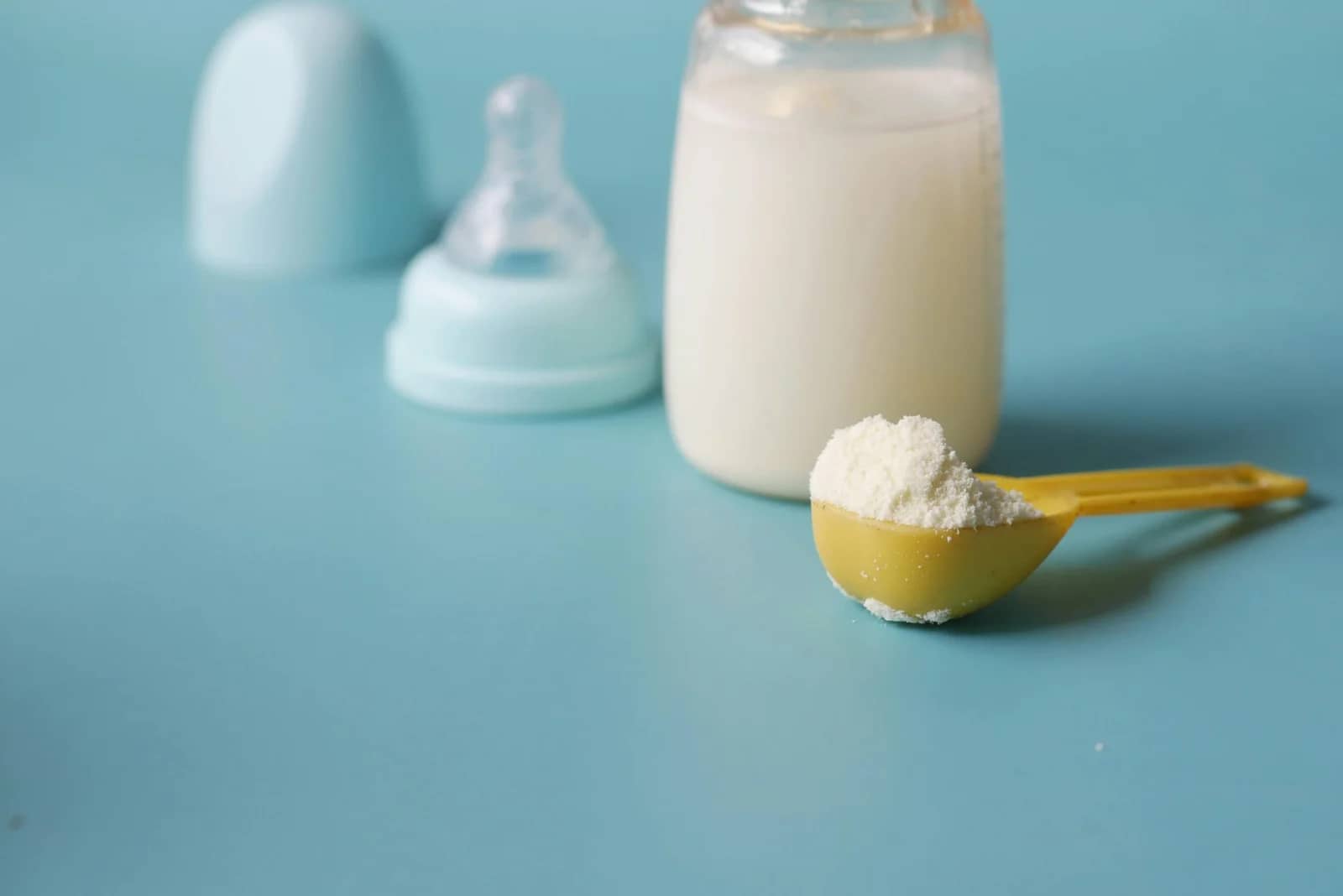Formula feeding is a safe, nutritious, and flexible way to nourish your baby, whether you choose it exclusively or alongside breastfeeding. For many parents, understanding formula feeding can feel overwhelming due to the variety of options, preparation guidelines, and feeding routines. This comprehensive, well-researched guide covers everything you need to know about formula feeding, including types of formula, how to prepare bottles safely, feeding schedules, pros and cons, troubleshooting common issues, and tips for a successful formula feeding journey.
Key Takeaways for Formula Feeding
- Formula is a Safe & Nutritious Choice: Infant formula provides all the essential nutrients your baby needs for healthy growth and is a perfectly safe alternative or supplement to breastfeeding.
- Variety of Options Available: You can choose from different types (cow’s milk-based, soy, hydrolysate, specialised) and forms (powder, concentrated liquid, ready-to-feed) to suit your baby’s needs and your lifestyle.
- Prioritise Safe Preparation: Always use freshly boiled water (cooled for no more than 30 minutes to at least 70°C) and follow manufacturer’s instructions precisely. Proper sterilisation of all feeding equipment is crucial to protect your baby’s health.
- Responsive Feeding is Best: Instead of strict schedules, learn to recognise your baby’s hunger cues and feed on demand. Typical amounts are a guide, but every baby is unique.
- Be Aware of Storage Guidelines: Prepared formula should ideally be made fresh for each feed. If prepared in advance, cool it quickly and store in the fridge for no longer than 24 hours. Never reheat formula in a microwave and discard any leftover formula after a feed.
- Mixed Feeding is a Valid Option: Combining breastfeeding and formula feeding can offer flexibility. Introduce formula gradually and seek support if needed.
- Know Common Challenges: Be prepared for issues like bottle refusal, gassiness, or constipation, and know when to consult your healthcare provider for advice on these or potential allergies.
- Bonding is Key: Regardless of how you feed, holding your baby close and maintaining eye contact during feeds strengthens your bond.
What Is Formula Feeding?
Formula feeding involves giving your baby commercially prepared infant formula as a substitute for, or supplement to, breast milk. Infant formula is designed to mimic the nutritional profile of breast milk as closely as possible, providing essential proteins, fats, carbohydrates, vitamins, and minerals necessary for healthy growth and development.
While breast milk is considered the gold standard for infant nutrition due to its unique antibodies and adaptive composition, formula feeding is a safe and effective alternative for families who cannot or choose not to breastfeed. Reasons for formula feeding may include medical issues, low milk supply, lifestyle factors, or personal preference.
Types of Infant Formula
Choosing the right type of formula is important for your baby’s health and comfort. The main types of infant formula include:
- Cow’s Milk-Based Formula: The most common type, modified to be suitable for infants. It is fortified with nutrients to resemble breast milk.
- Soy-Based Formula: Made from soy protein, this is suitable for babies with lactose intolerance or milk protein allergies.
- Protein Hydrolysate Formula: Contains proteins broken down into smaller pieces for easier digestion. Recommended for babies with allergies to cow’s milk or soy.
- Specialised Formulas: Designed for premature infants or babies with specific medical needs, such as metabolic disorders or severe allergies.
Always consult your paediatrician before switching formulas, especially if your baby has allergies or digestive issues.
Forms of Infant Formula
Infant formula comes in three main forms, each with its own advantages and considerations:
- Powdered Formula: The most economical and widely used. It must be mixed with water before feeding.
- Concentrated Liquid Formula: Requires dilution with water. It offers convenience but is more expensive than powder.
- Ready-to-Feed Formula: Pre-mixed and can be fed directly to your baby. It is the most convenient but also the most costly.
Tip: Always follow the manufacturer’s instructions for mixing and serving formula to ensure your baby receives the right nutrition and to avoid health risks.
How Much and How Often to Feed – Understanding Your Baby’s Needs
The amount of formula your baby needs depends on their age, weight, and appetite. Newborns have tiny stomachs and require small, frequent feeds. As your baby grows, so does their stomach capacity and the amount of formula needed per feed.
Typical Feeding Amounts by Age and Weight
- Day 1: Stomach size of a cherry; 5–7 ml per feed
- Day 3: Stomach size of a walnut; 22–27 ml per feed
- End of Week 1: Stomach size of an apricot; 45–60 ml per feed
- 1 Month: Stomach size of a large egg; 80–150 ml per feed
After the first week, babies typically need 150–200 ml of formula per kilogram of body weight per day until six months old.
Example Daily Formula Needs by Weight
- 3 kg: 450–600 ml per day
- 5 kg: 750–1,000 ml per day
- 7 kg: 1,050–1,400 ml per day
- 9 kg: 1,350–1,800 ml per day
- 10 kg: 1,500–2,000 ml per day
Note: Every baby is unique. Responsive (on-demand) feeding, feeding when your baby shows hunger cues, is best. Signs include rooting, sucking on hands, and fussiness.
Feeding Frequency
- Newborns: Every 2–3 hours (8–12 feeds per 24 hours)
- Older Infants: Every 3–4 hours (6–8 feeds per 24 hours)
Preparing and Storing Formula Safely
Proper preparation and storage of formula are crucial to your baby’s health. Here’s a step-by-step guide based on NHS recommendations:
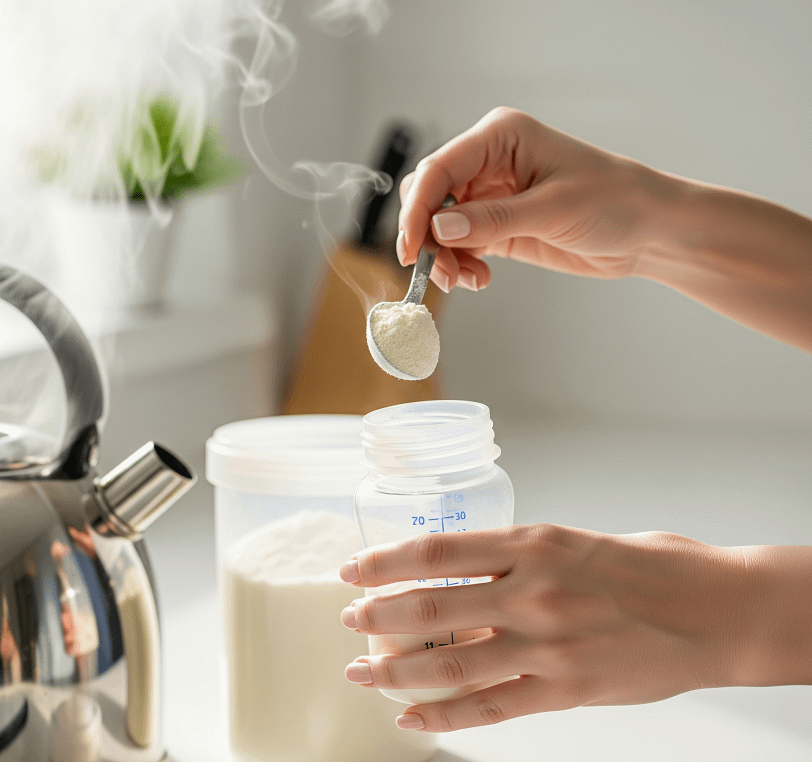
How to Prepare Formula
- Wash your hands and clean all feeding equipment.
- Boil fresh tap water (do not use water that has been boiled before).
- Let the water cool for no more than 30 minutes (should be at least 70°C).
- Pour the correct amount of water into the sterilised bottle.
- Add the formula powder using the scoop provided, levelling it off.
- Mix thoroughly by shaking the bottle until the powder dissolves.
- Cool the bottle under cold running water.
- Test the temperature on your wrist before feeding (it should be body temperature).
- Discard any leftover formula after a feed.
Storing Formula
- Made-up formula: It is safest to prepare the formula fresh for each feed. If you must prepare in advance, rapidly cool the prepared formula and store it in the back of the fridge (not the door) for no longer than 24 hours.
- If stored at room temperature, use the prepared formula within 2 hours.
- Never reheat formula in a microwave, as this can create dangerous hot spots that could burn your baby’s mouth. If warming a refrigerated bottle, place it in a jug of warm water until it reaches body temperature, then check carefully before feeding.
- Never use formula past its expiration date.
Tip: Always follow the manufacturer’s instructions for your specific formula brand, as there can be slight variations.
Sterilising Feeding Equipment
Sterilising all feeding equipment is essential for babies up to 12 months old, as their immune systems are still developing. Always wash bottles, teats, and other equipment thoroughly in hot, soapy water with a clean bottle brush and rinse before sterilising. There are several effective methods:
- Steam Sterilising: This uses an electric or microwave steam steriliser. Follow the manufacturer’s instructions for water amount and sterilisation time. Ensure bottle openings and teats face downwards.
- Cold Water Sterilising: Submerge all equipment in a cold water sterilising solution (using tablets or liquid) in a clean, lidded container. Ensure no air bubbles are trapped and all items are fully submerged for at least 30 minutes. Change the solution every 24 hours.
- Boiling: Place cleaned equipment in a large saucepan, cover with water, and bring to a rolling boil for at least 10 minutes. Ensure all items remain fully submerged. Be cautious of hot water and steam, and never leave unattended. This method can sometimes cause teats to perish faster.
After sterilising, leave the equipment in the steriliser or pan until needed. If removing, wash and dry your hands thoroughly, or use sterile tongs, and immediately assemble bottles with teats and lids to prevent contamination.
Mixed Feeding: Combining Breast and Formula
Many families choose to combine breastfeeding with formula feeding, known as mixed or combination feeding. Reasons may include returning to work, low milk supply, or personal preference.
How to Introduce Formula
- Gradually replace breastfeeds with formula feeds, one at a time, to allow your baby and your body to adjust.
- Start with a bottle at a time of day when your baby is least fussy.
- Be patient: Some babies may take time to accept a bottle, especially if they are used to breastfeeding.
Tips for Mixed Feeding
- Maintain breastfeeding as much as possible to keep up your milk supply.
- Responsive feeding: Offer breast or bottle based on your baby’s hunger cues.
- Seek support from a lactation consultant if you have concerns about supply or the baby’s acceptance.
Pros and Cons of Formula Feeding
Pros
- Convenience and Flexibility: Anyone can feed the baby, making it easier for partners and caregivers to help.
- Dietary Freedom: Mothers do not need to adjust their diet or worry about medications affecting breast milk.
- Less Frequent Feeds: Formula takes longer to digest, so formula-fed babies may feed less often.
- Essential for Certain Medical Conditions: Some mothers or babies cannot breastfeed due to medical reasons.
Cons
- Lack of Antibodies: Formula does not contain the immune-boosting antibodies found in breast milk.
- Expense: Formula can be costly, especially ready-to-feed and specialised types.
- Preparation and Planning: Formula feeding requires planning, equipment, and time for preparation and cleaning.
- Possible Digestive Issues: Formula-fed babies may experience more gas, constipation, or firmer stools.
- Risk of Infection: Improper preparation or contaminated water can increase infection risk.
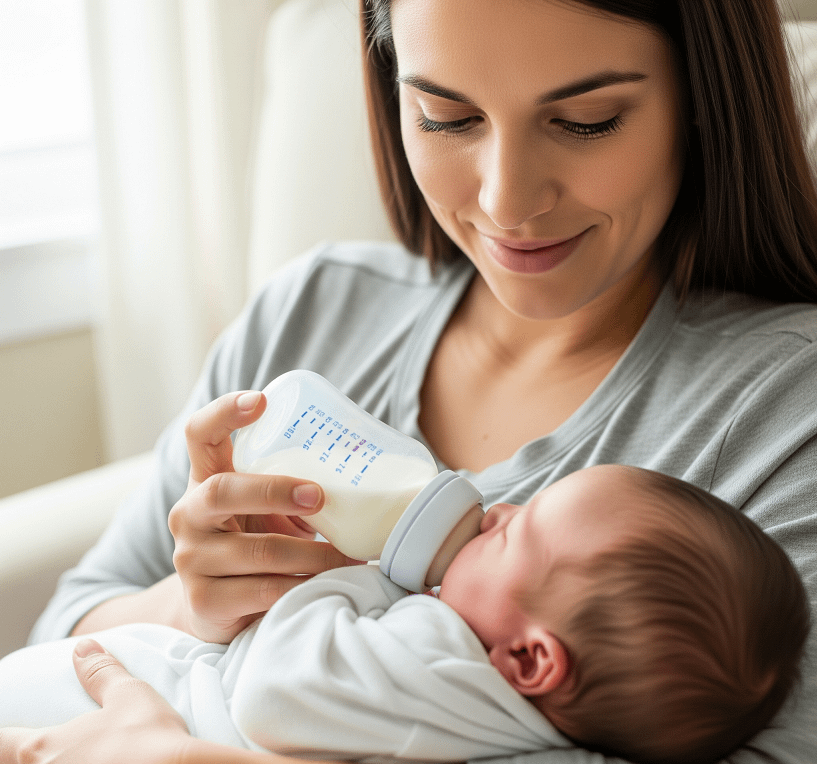
Common Challenges and Solutions
Baby Refuses the Bottle
- Try different bottle nipples (shapes, flow rates).
- Offer the bottle when your baby is calm and not overly hungry.
- Have someone else offer the bottle if your baby associates you with breastfeeding.
Spitting Up or Gassiness
- Ensure proper bottle angle to reduce air swallowing.
- Burp your baby frequently during feeds.
- Speak to your paediatrician about switching formulas if issues persist.
Constipation
- Formula-fed babies may have firmer stools.
- Ensure correct formula preparation.
- Consult your doctor if constipation is severe or persistent.
Formula Allergies
- Symptoms: Rash, vomiting, diarrhoea, excessive fussiness.
- Consult your paediatrician about switching to hypoallergenic or specialised formula.
Overfeeding
- Watch for baby’s cues of fullness (turning away, slowing sucking).
- Avoid pressuring your baby to finish the bottle.
Formula Feeding Tips for Success
- Follow instructions: Always use the correct ratio of formula to water.
- Sterilise bottles and equipment before each use, especially for newborns.
- Feed on demand: Let your baby’s hunger cues guide feeding times and amounts.
- Hold your baby close: Bottle feeding is a great time for bonding and eye contact.
- Keep supplies stocked: Have enough formula, bottles, and clean water on hand.
- Stay organised: Plan ahead to avoid last-minute stress.
- Ask for help: Don’t hesitate to consult your healthcare provider or lactation consultant with questions.
Conclusion
Formula feeding is a healthy, flexible, and practical option for many families. Whether you choose formula exclusively or as part of mixed feeding, understanding the types of formula, safe preparation, feeding routines, and potential challenges will help you feel confident and prepared. Responsive, loving feeding, whether by breast or bottle, nourishes your baby’s growth and strengthens your bond.
Remember: Every family’s feeding journey is unique. The best choice is the one that works for you and your baby.
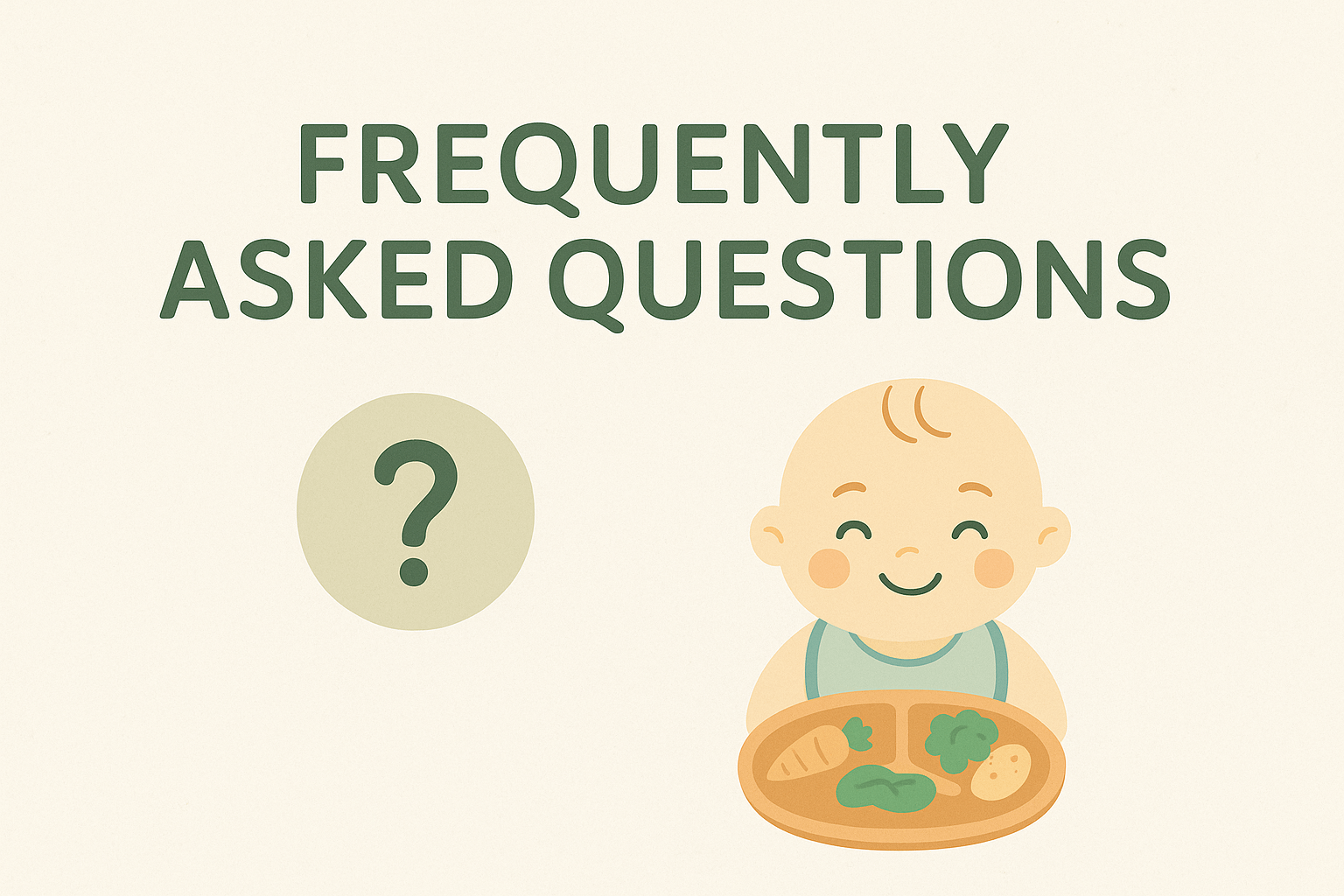
Frequently Asked Questions – Formula Feeding
Is formula feeding safe for my baby?
Yes, infant formula is a safe and nutritious alternative to breast milk and is regulated to meet babies’ nutritional needs.
How do I choose the right formula?
Most babies do well on standard cow’s milk-based formula. If your baby has allergies or digestive issues, consult your doctor for specialised options.
Can I switch between formula brands?
Yes, but introduce new formulas gradually and monitor your baby for any reactions.
How do I know if my baby is getting enough formula?
Monitor weight gain, diaper output (at least 6 wet diapers a day), and overall satisfaction after feeds.
Can I prepare formula in advance?
Yes, but store it in the fridge and use within 24 hours. Always discard any leftover formula after a feed.
Further Reading
- How to Soothe a Crying Baby: Proven Techniques
- Building a Bond with Your Baby
- Changing Bag Essentials
- Baby Milestones: What to Expect in the 1st Year
- Your Go-To Guide for Nappy Changing
Baby Brezza: Steriliser Dryer Advanced
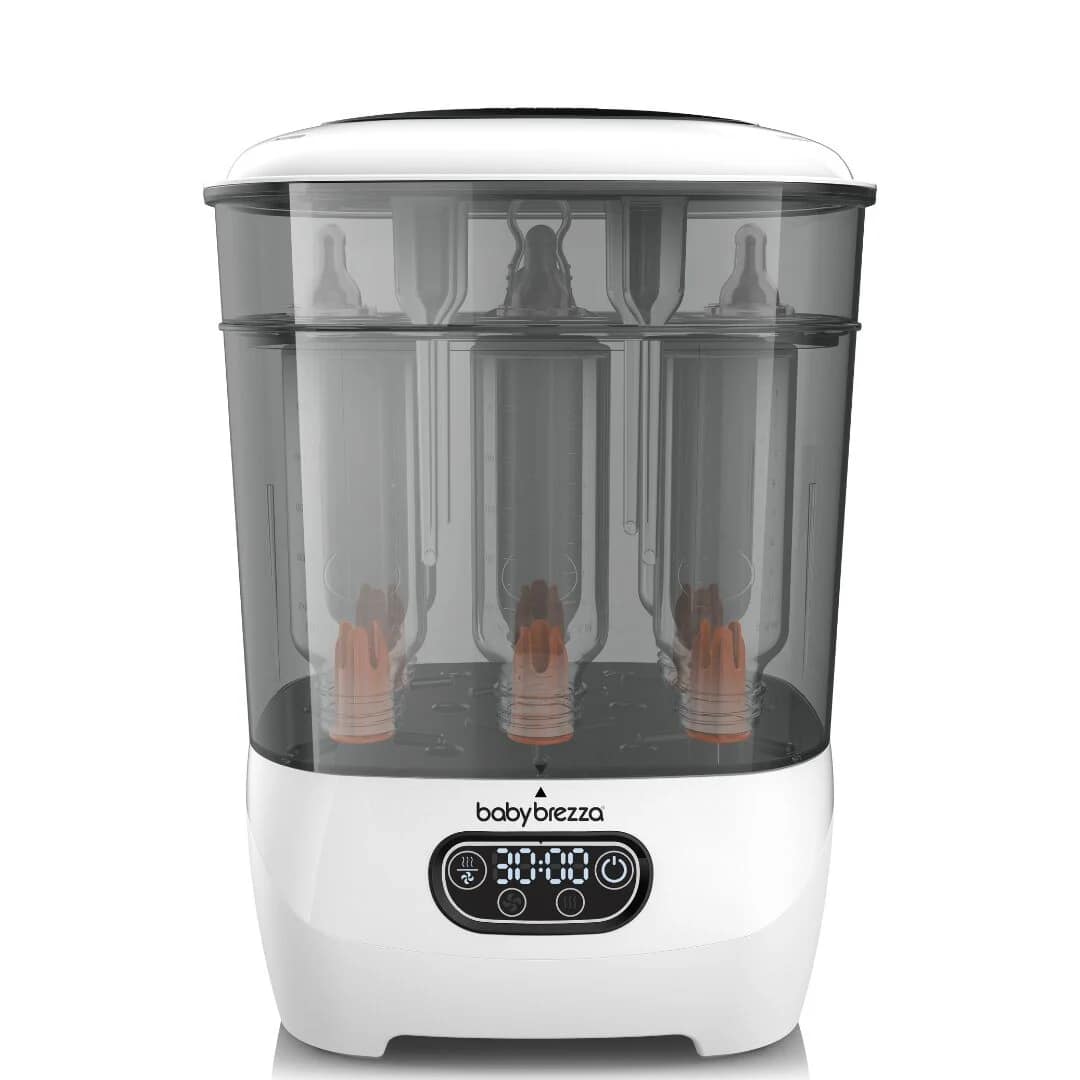
Introducing the ultimate time-saver for busy parents: the BabyBrezza 4-in-1 Steriliser & Dryer. This innovative device automatically sterilises and dries all your baby's essentials in one simple step, from bottles and breast pump parts to dummies, sippy cups, and even small toys.
Utilising natural steam, it effectively sterilises, then intelligently dries 33% faster with 95% germ-free air, thanks to its replaceable HEPA filter. Your items remain sterile inside for up to 24 hours! With the largest capacity on the market, it comfortably holds 8 bottles and 2 full pump part sets from any brand.
Designed for ultimate convenience, the intuitive LCD control panel offers 4 versatile functions: Sterilise & Dry, Sterilise Only, Dryer Only, or use it as a sterile Storage System. Its modular design allows for flexible use in 4 different configurations. Built with a rust-free stainless steel heating plate and entirely BPA-FREE, it also comes with a 1-year warranty for peace of mind.
Pro-tip: For best results and longevity, always rinse bottles before sterilising to prevent residue buildup and descale regularly, especially in hard water areas.
Sources
NHS (National Health Service):
- NHS: Bottle feeding advice
- NHS: Sterilising baby bottles
- NHS: Making up a feed
- NHS: How much formula milk does my baby need?
- NHS: Introducing solid foods (weaning)
UNICEF UK Baby Friendly Initiative:
National Childbirth Trust (NCT):
Lullaby Trust:
This article is for informational purposes only and does not replace professional medical advice. Always consult your healthcare provider regarding your baby’s feeding needs.

